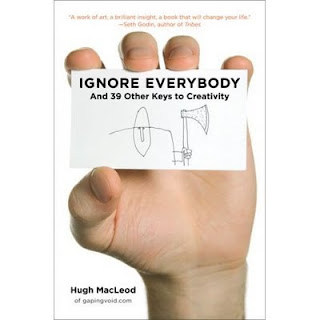 Still life--it doesn't make for good stories. Bad decisions? They do.
Still life--it doesn't make for good stories. Bad decisions? They do.A friend from Florida just emailed me a list of random thoughts, truisms to laugh at or shake your head over. Here's the one that grabbed me for this week's writing exercise: "Bad decisions make good stories." Funny, but really accurate. A good motto for writers.
Bad decisions are one of the only ways plot is furthered in memoir and fiction. If you're stuck in a rut, chances are your writing is staying too safe.
This week's discussion and exercise looks at a simple question. Why are you keeping bad decisions out of your book?
Staying Safe
A student in my classes complained about her writer's block. She wrote several chapters that just flowed out. Then, about chapter 5, she got stuck. Nothing happened--either on the page or with the pen. I suggested she look at the bad decisions in her chapters. Try to find something that made everyone uneasy or got them into trouble.
What you're after here are the qualities of risk. What does the edge feel like? What does it feel like to "up the stakes" in your writing?
This writer was working on her storyboard (see post two weeks ago) so she went back to it. As she reviewed the plot points, she realized nothing big had happened. She was saving the big stuff for later. No bad decisions yet, so very little momentum. Very little energy to propel the plot.
I asked her why not. As she explained, I saw that this writer is a very nice person. She believes in a world where most people are good at heart. She just couldn't see getting her characters in trouble, painting them as anything but good people too.
I like her, who wouldn't? And I also believe in that kind of world. But not on paper. Not in fiction or memoir, especially if you want to publish today.
I'm not suggesting you have to make murder and mayhem. Bad decisions can just be telling a white lie, and watching the consequences unfold. I asked this writer if she'd ever told a white lie, and she said, "Of course, who hasn't?"
"Find your bad decisions," I suggested. "List them, then transport one into your story."
Finding Bad Decisions--This Week's Writing Exercise
We've all made bad decisions. We've been on the receiving end of other people's, too. They are hard to forget, no matter how hard we try. Think of what your "story" was after the decision. It probably had drama, movement, energy, and consequences. That's what you're after in your writing.
This week write about one really bad decision you made in your life. Write about it in all its glory. I like to set a kitchen timer for 15 minutes, to limit the agony. Maybe you're far enough away to not feel the pain of it again, but if you do feel some embarrassment or unease as you write, good thing--because it'll make the writing that much more emotionally grabbing for a reader.
Now look at your book draft. Where are the bad decisions? If you don't have many, make a list of 10 things your character would never do. (Use this equally for memoir or fiction.) Now write one scene, one moment, using one item on the list--imagining it happening.
See if this provides momentum. Gets you unstuck. Out of that "still life."
PS We'll carry this one step further next week, with an update on storyboards. I've been learning a lot as I work on my novel's sequel, and I'm feeling far from stuck now--hooray!











 Sarah Tieck, a fellow instructor at the Loft Literary Center, emailed me with a great question about writing notebooks. I've heard the same question from other writers.
Sarah Tieck, a fellow instructor at the Loft Literary Center, emailed me with a great question about writing notebooks. I've heard the same question from other writers.









